Uma Plain: Road at the Base of the Mountain
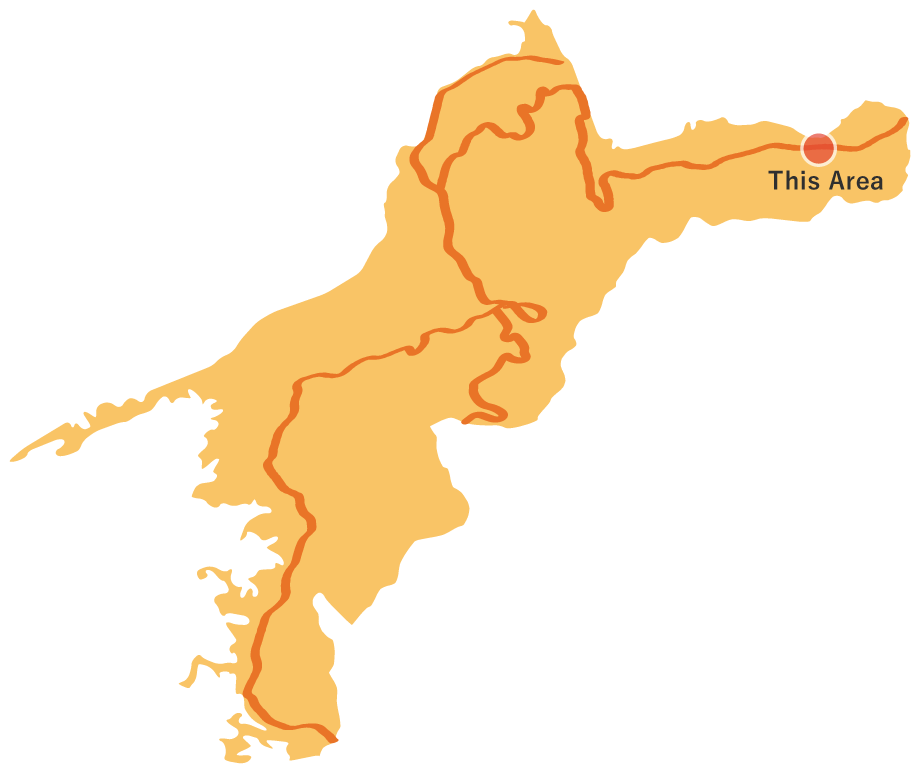
Uma Plain: Road at the Base of the Mountain
This route starts near the Toyoda bus stop along National Highway 11 (Toyoda, Toyooka-cho, Shikokuchuo-shi), follows the highway along the foothills of the Uma plain, and passes the Shin-Hasedera Temple which is considered to be one of Shikoku's eight scenic spots. This 16.4 km route heads to the Sankakuji Temple (temple No. 65). You can see the contrast between the greenery at the foot of the mountains and the Seto Inland Sea below on this idyllic route. The view from Shin-Hasedera Temple, located at the top of the 400 stone steps, is breathtaking.
Uma Plain: Road at the Base of the Mountain(16.4km)

 Spots to photograph
Spots to photograph
If you wish to receive a certificate, please take a photo that includes yourself at the designated photo point for each course.
Nearby sightseeing spots

-
1
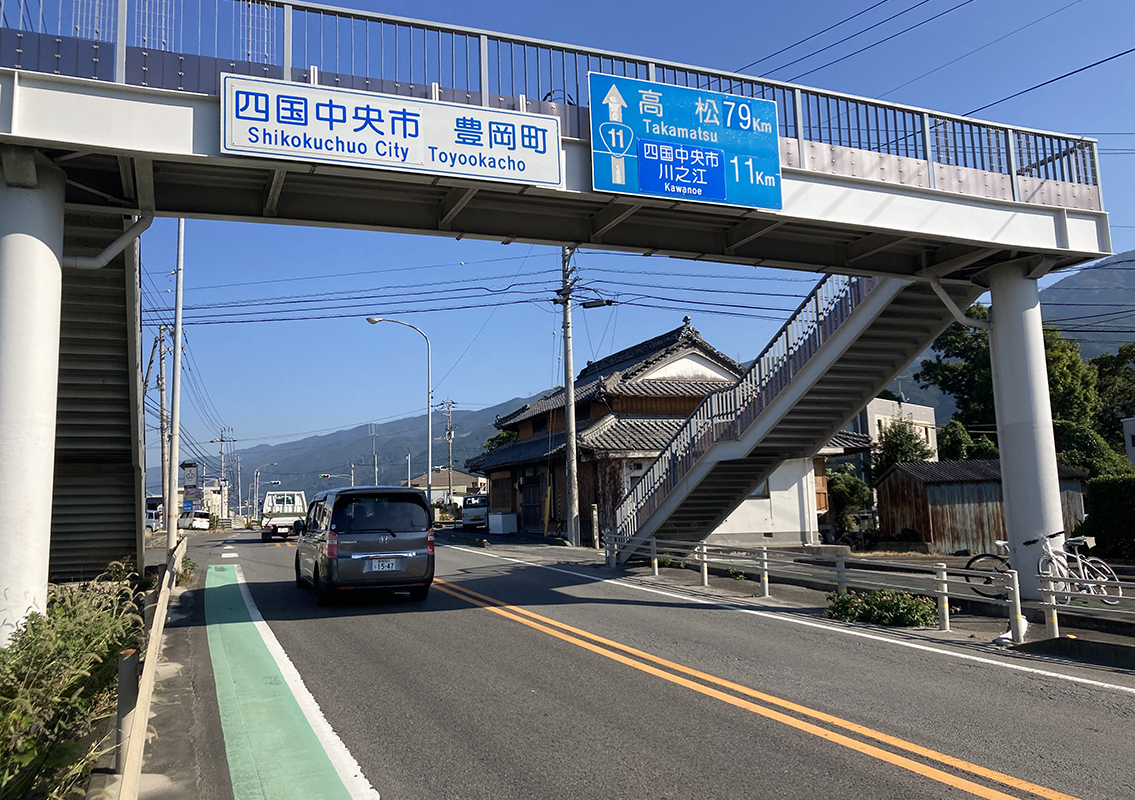 Starting point: Toyoda
Starting point: ToyodaThis intersection is the starting point, and the pedestrian bridge serves as a landmark. You will also see a Shikokunomichi (Shikoku Trails) sign here. Leave the national highway and head south, then east along the mountain.
-
2
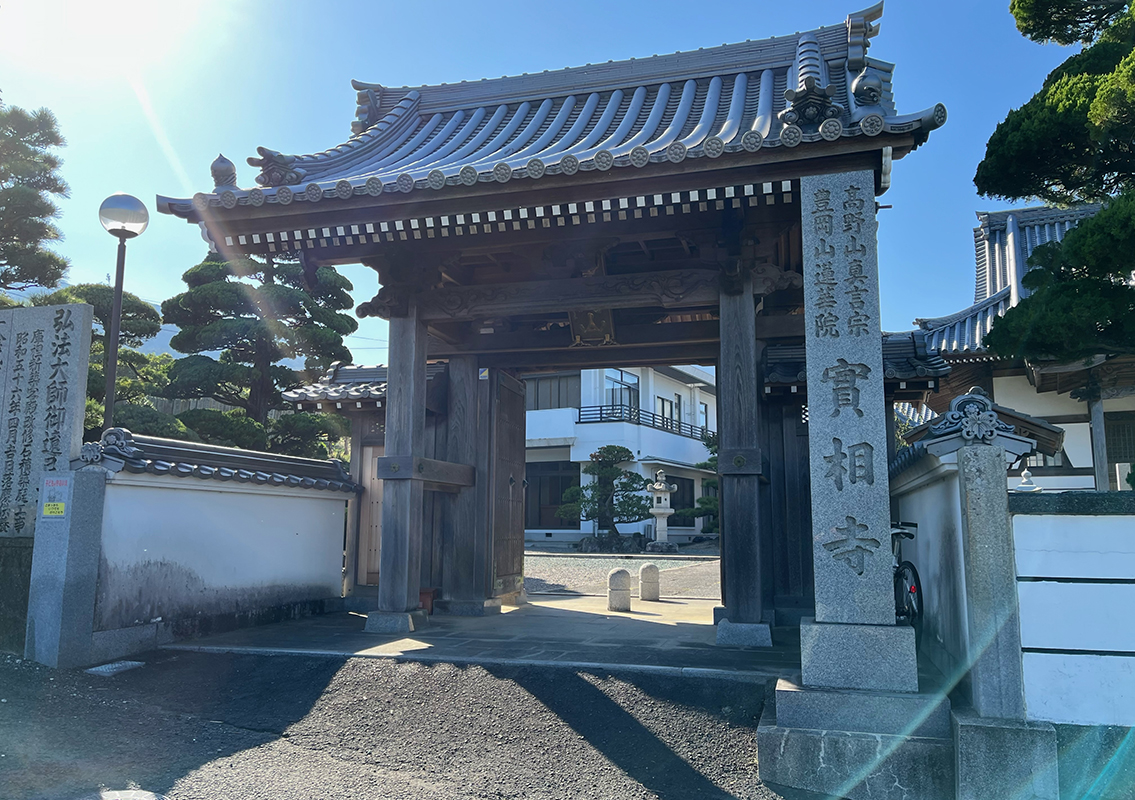 Jissoji Temple
Jissoji TempleThe main hall of the Jissoji Temple on the left has been moved from Donaru, located halfway up Mt. Toyouke. This structure dates back to the Muromachi period and is characterized by its wooden interior framework and rich colors.
-
3
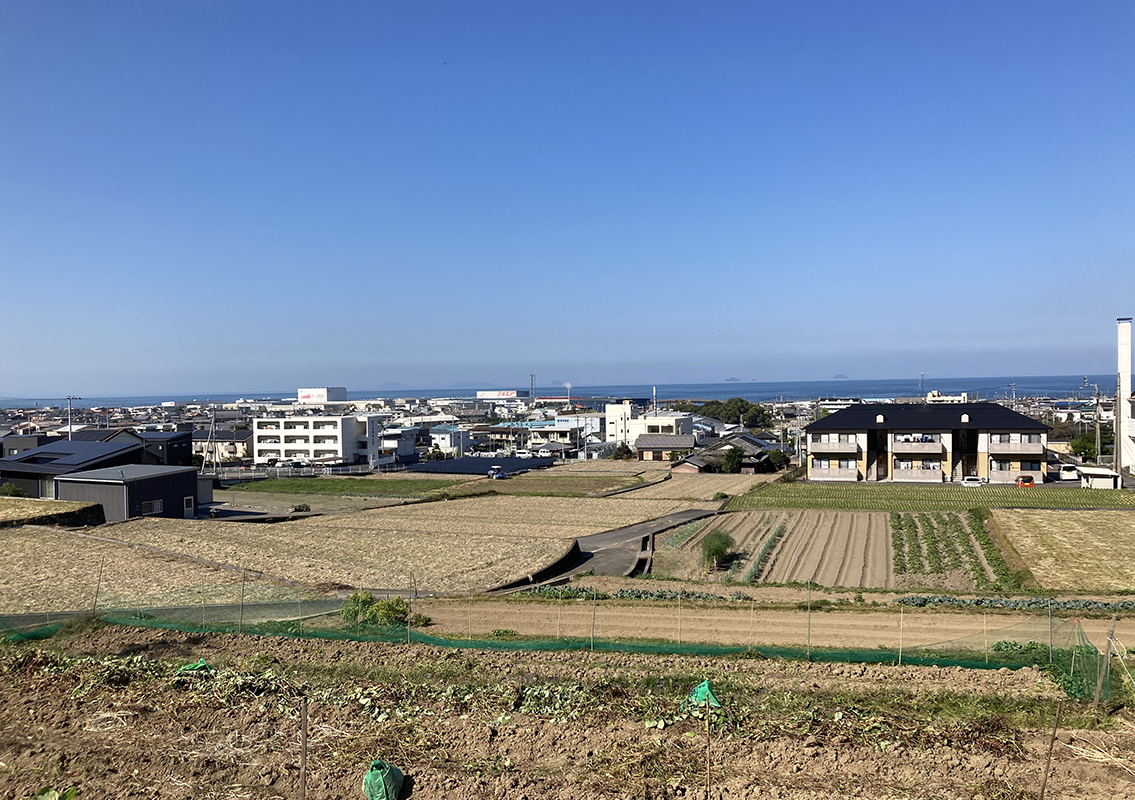 Landscape of the Doi District
Landscape of the Doi DistrictWhen you go up a little to the base of the mountain and look down, you can see the rural landscape and townscape of the Doi district, as well as islands such as Kamijimamachi and Uoshima in the Seto Inland Sea.
-
4
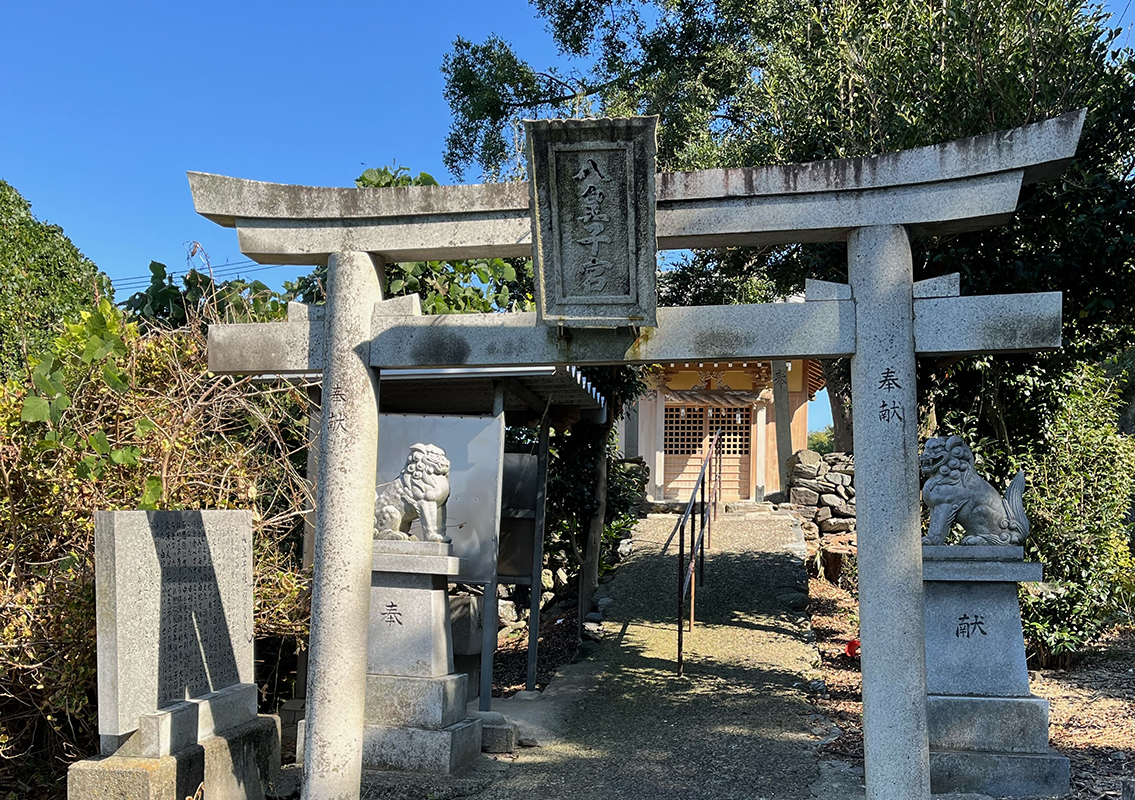 Hachiojisha (Hachioji Shrine)
Hachiojisha (Hachioji Shrine)There is a small torii gate along the road. There is a stone monument at the entrance that explains that a white snake is enshrined here and the legend surrounding it. The Hokora (small shrine) inside is well-maintained.
-
5
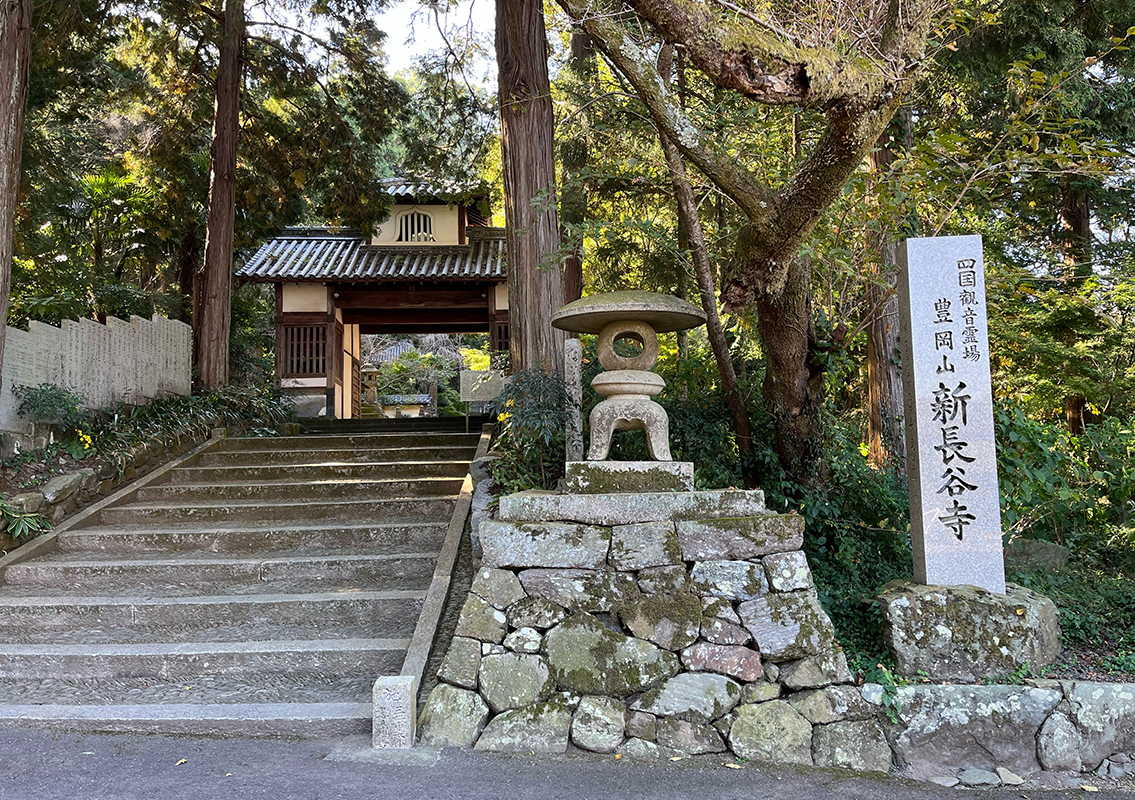 Shin-Hasedera Temple
Shin-Hasedera TempleShin-Hasedera is a temple of the Koyasan Shingon sect erected in 724. The principal object of worship, the Eleven-Faced Kannon Statue, was carved as a trial in 714 by two Buddhist sculptors when they carved the main object of worship of Hasedera Temple, which is the eighth temple in the pilgrimage in Nara. The 400 stone steps are so steep that they seem to tower over you, and the grounds make for a very picturesque scene with lush old trees such as camphor, cypress, and pine. The view is said to be one of the eight scenic spots of Shikoku. You can see the Matsuyama Expressway, the cityscape including the paper factory chimneys that are the symbol of Shikokuchuo city, and the island of Hiuchinada in the Seto Inland Sea in the distance.
-
6
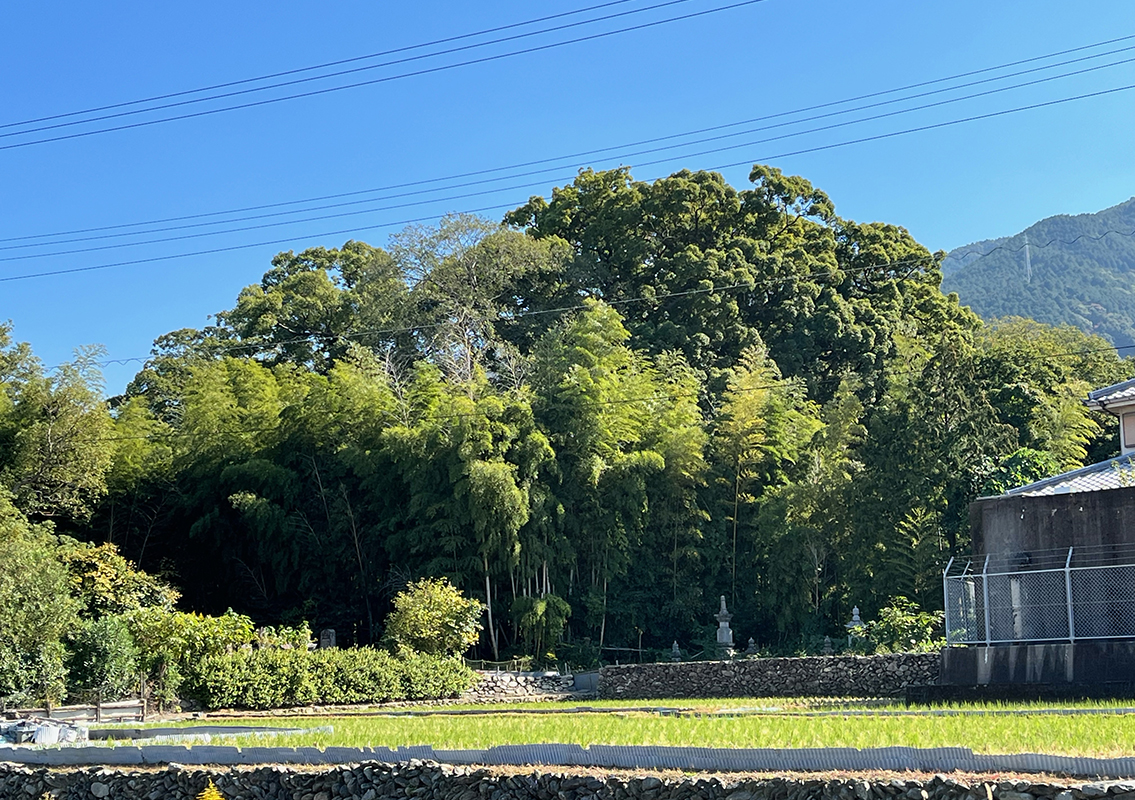 Kojin no Mori
Kojin no MoriKojin no Mori is a natural monument designated by Shikokuchuo City. It is one of the few evergreen forests where hundreds of types of plants grow naturally, mainly the temperate broad-leaved Hortonoki trees, including camphor trees and hackberry trees. This forest is particularly valuable for botany as it is home to the flourishing Futokazura, which is said to grow nowhere else in Shikoku. Kojinja is enshrined in the forest. The clear water that gushes from the spring is a source of pride for the residents.
-
7
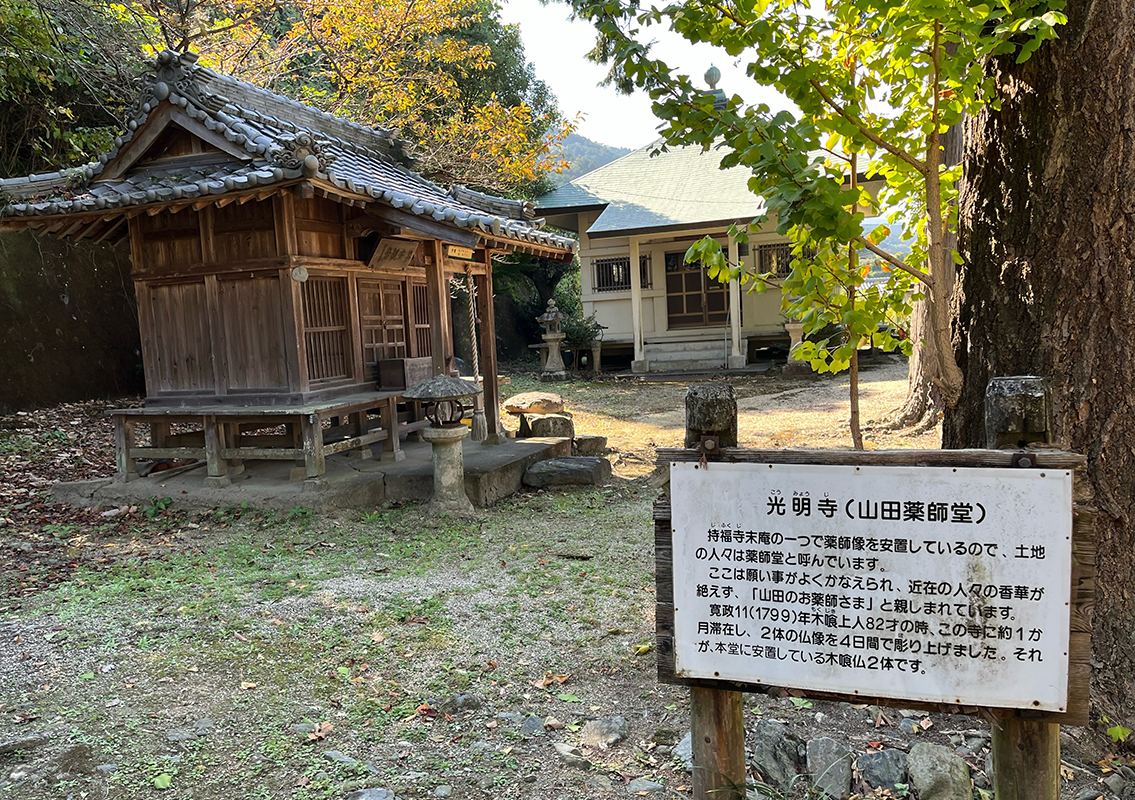 Kounyouji Temple (Yamada Yakushido)
Kounyouji Temple (Yamada Yakushido)Just to the north of Mishima-nishi Junior High School, on the right after passing through the Niomon gate of the Kounyouji Temple, is the Kounyouji Yakushido (also known as Yamada Yakushido), which was built in Enpo 7 (1679). Two Kannon statues crafted by Mokujiki Gogyo Shonin in Kansei 11 (1799) are enshrined here. One of them is said to have been carved into a standing yew plum pine tree. It is open for public visits on the 8th of each month. The compassionate face of Kannon inside the tree will soothe your soul.
-
8
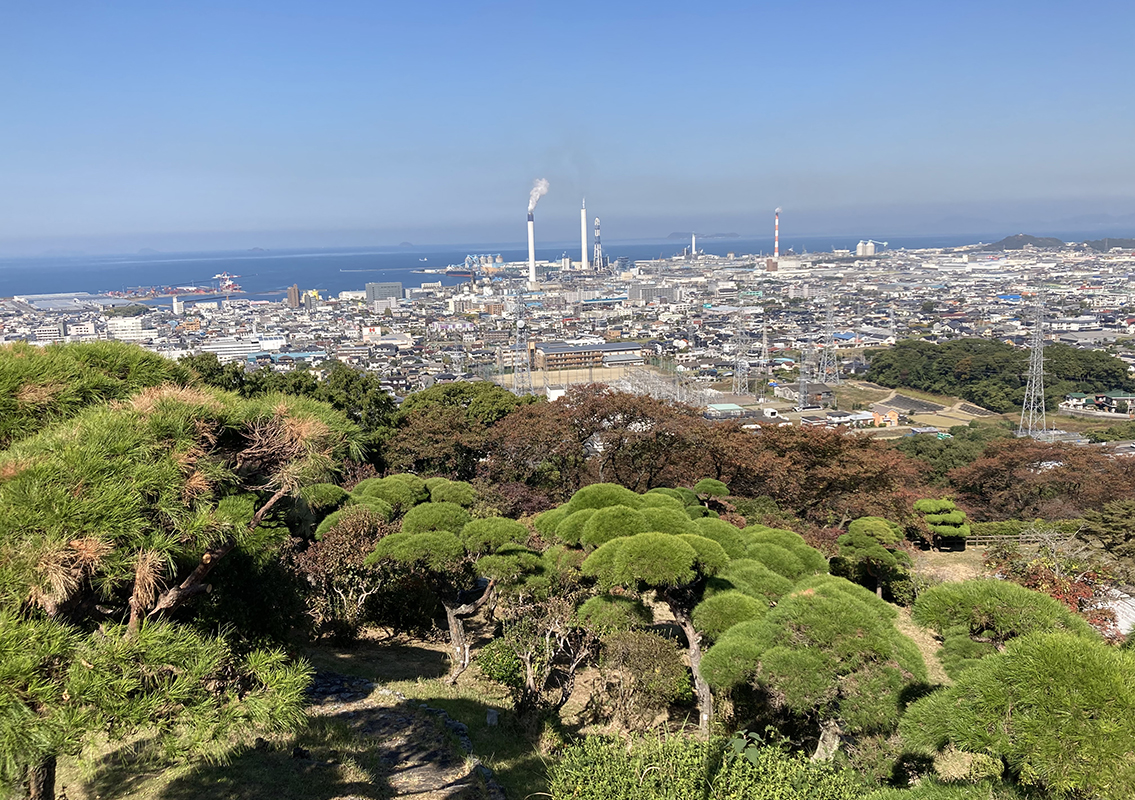 Mishima Park
Mishima ParkThe movie "Shodo Girls" was filmed here. This scenic park gives you a sweeping view of the Seto Inland Sea. The vast 8.3 ha park has amenities such as a play area, a picnic area, a promenade, and an observation deck. The park is a place of relaxation for the citizens of Shikokuchuo City. In addition to approximately 450 cherry blossom trees, 150 other types of plants, including azaleas, wisteria, and pine trees, delight visitors all year round. Below, you can see the paper factories and their chimneys that support the local economy, and in the distance, you can see the islands of the Seto Inland Sea and the Setouchi Shimanami Kaido.
-
9
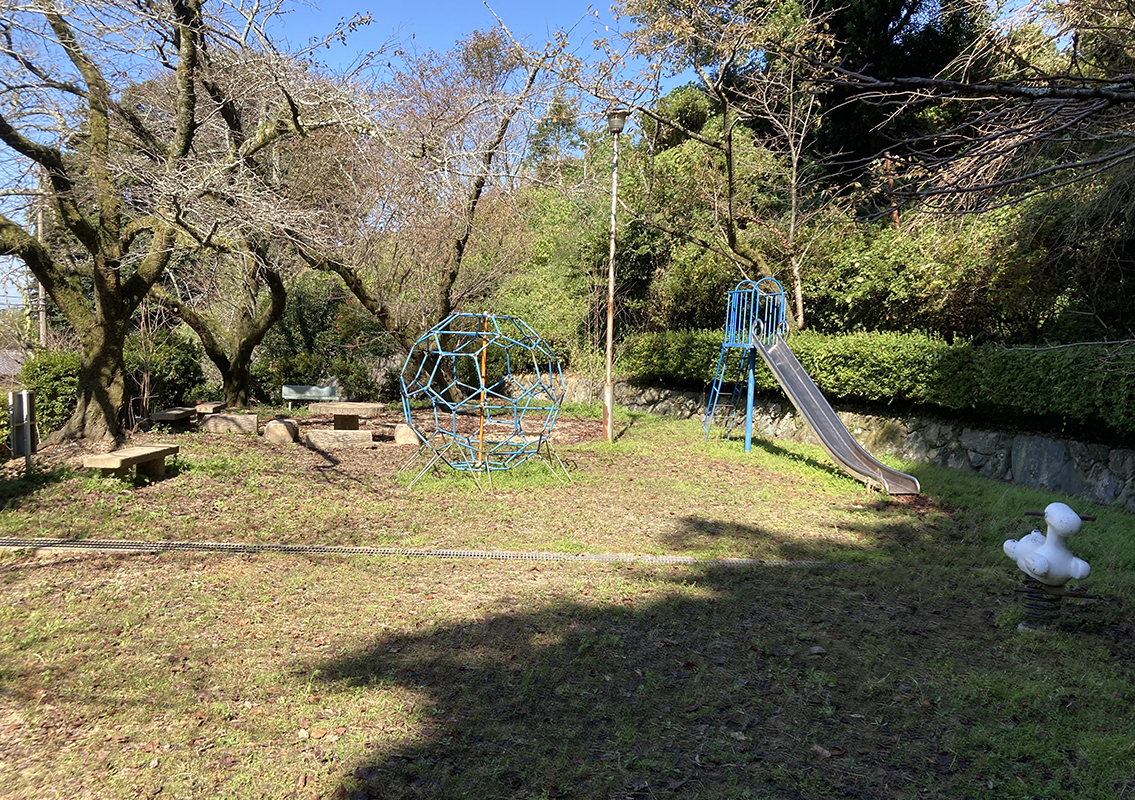 Togawa (Sosui) Park
Togawa (Sosui) ParkThis park was built in Showa 28 (1953) to commemorate the completion of the Yanase Dam in what is now Kinsha Town and the completion of the Dozan River Canal, which was a long-awaited wish of the locals of the Uma area. There is little playground equipment and public restrooms within the park, making it a place where everyone can relax.
-
10
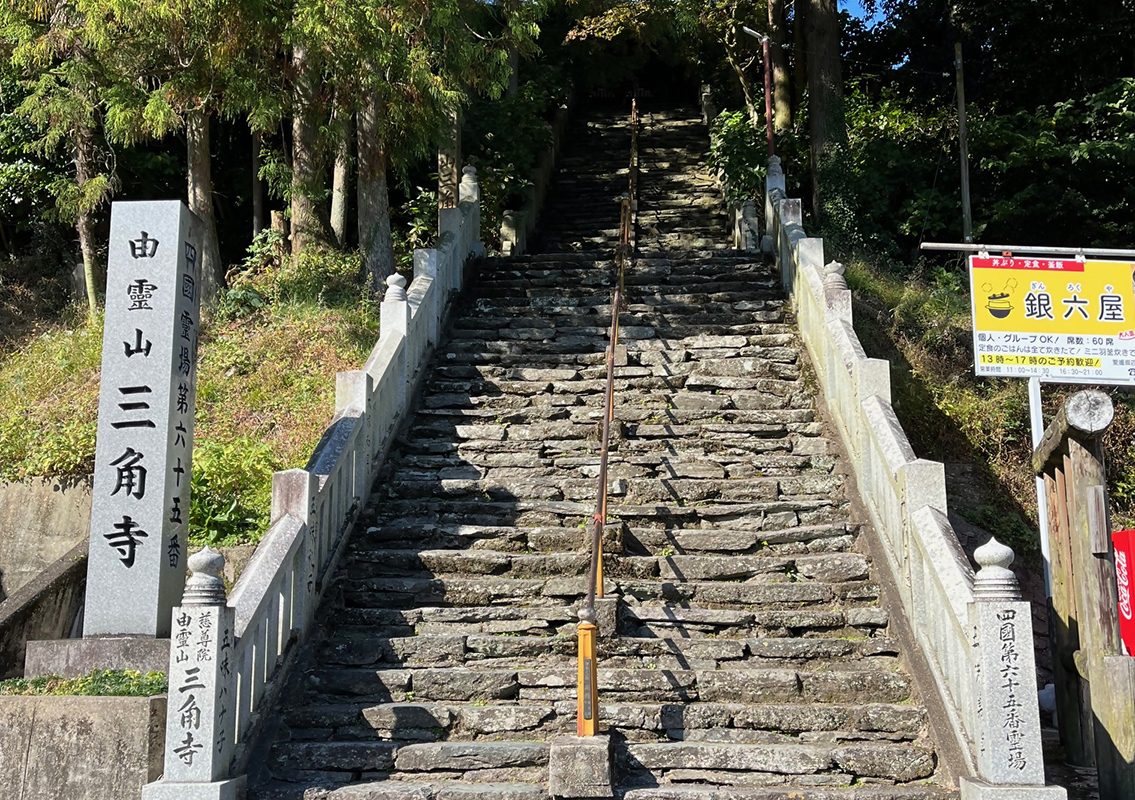 Temple No. 65 Sankakuji Temple
Temple No. 65 Sankakuji TempleYou have finally reached the end point of the trail, Sankakuji Temple. Continuing from Shin-Hasedera Temple, towering stone steps will welcome you.



